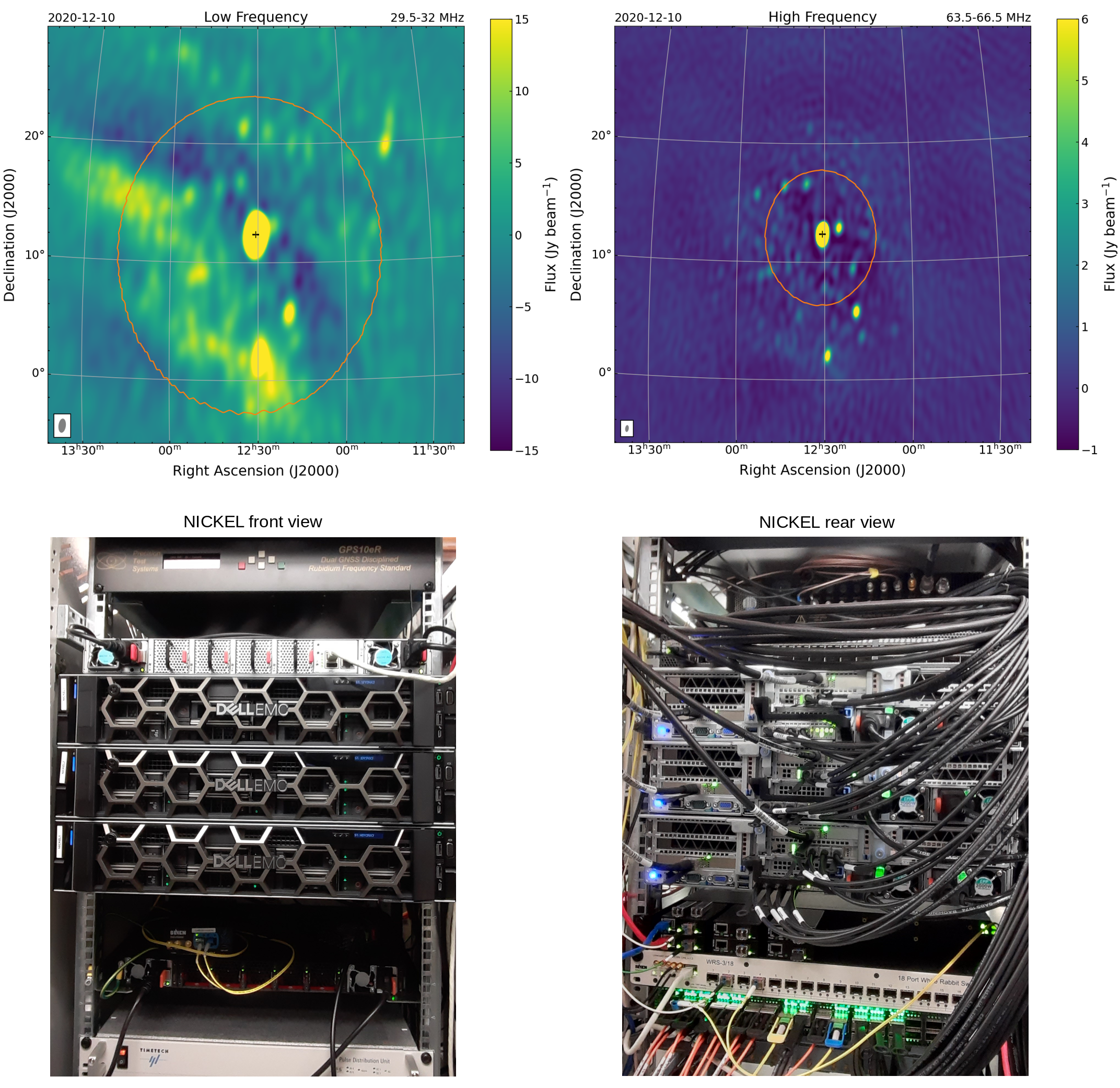Daily Image
01-02-2021NenuFAR strides towards imaging observations with NICKEL
| Submitter: | C. Viou, E. Tremou, A. Loh and J. Girard (on behalf of NenuFAR team) |
| Description: | Thanks to its newly acquired brain NICKEL, NenuFAR is carrying out astronomical observations utilizing its new imaging mode. NICKEL (NenuFAR Imaging Compute Kluster Elaborated from LOFAR's) is the recently inducted (since December 1, 2020) state-of-the-art GPU correlator for the SKA path finder NenuFAR telescope array. NICKEL has been designed in collaboration with ASTRON and inspired from COBALT2.0 - the mega mode correlator for LOFAR. The COBALT2.0 correlator design was adapted, scaled and optimized for the requirements of the NenuFAR’s antenna field. In addition, NICKEL also makes use of the LOFAR’s GPU based correlation software suite after incorporating significant necessary adaptations and optimizations for NenuFAR operations. The images at the top are the first-light images resulting from a 10 hour observation of Virgo A in the lower part (29.5-32 MHz) and the upper part (63.5-66.5 MHz) of the NenuFAR band. The orange ellipses show the primary beam (HPBW) of the instrument. The observations were carried out using only central 56 mini arrays having a maximum baseline of about 400m. At low frequencies, we clearly see the diffuse emission from the tip of the Loop I region. At high frequencies, several 3C radio sources are also seen, including M84, very close to Virgo A which appears as a powerful unresolved source. The angular resolution and sensitivity will significantly improve when observations with all the 96 mini arrays having up to 3km baselines and full bandwidth (10-85MHz) will be carried out in near future. The collaboration between Nancay radio observatory and ASTRON including sharing and reusage of the correlator hardware and software design developed at ASTRON is a highly successful example of European open science and technical collaboration. While on one hand it saves years of work, it also makes it possible for timely availability of high quality NenuFAR data to astronomers worldwide. A good example is the ongoing observations for the cosmic dawn project with NenuFAR which also includes both French and Dutch astronomers. More information can be found at NenuFAR webpage. The NenuFAR team specially thanks V.N. Pandey (ASTRON / RUG), F. Mertens (RUG), P.C. Broekema (ASTRON), E. Thetas (Paris Observatory), P. Zarka (Paris Observatory) and L.V.E. Koopmans (RUG) for their help. |
| Copyright: | NenuFAR/ASTRON |
| Tweet |  |
